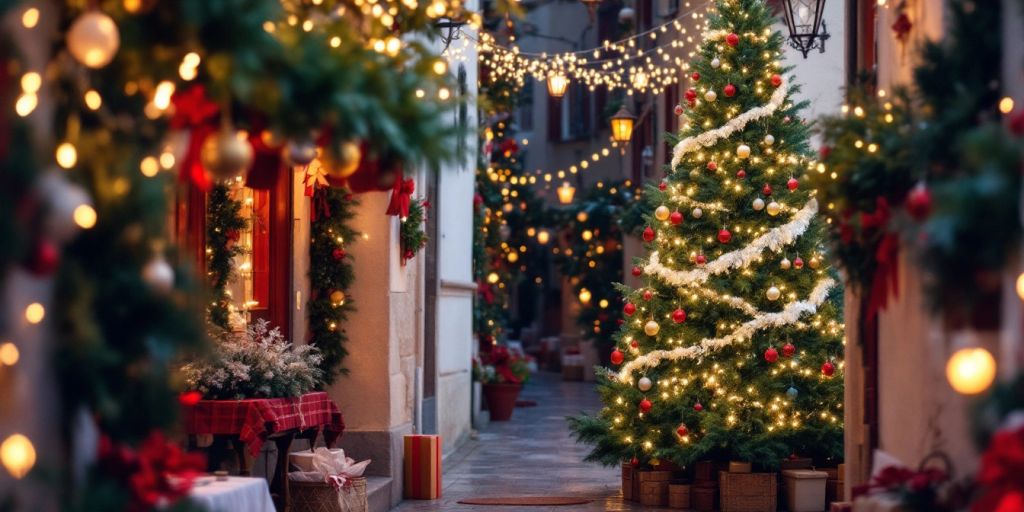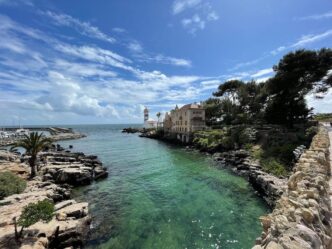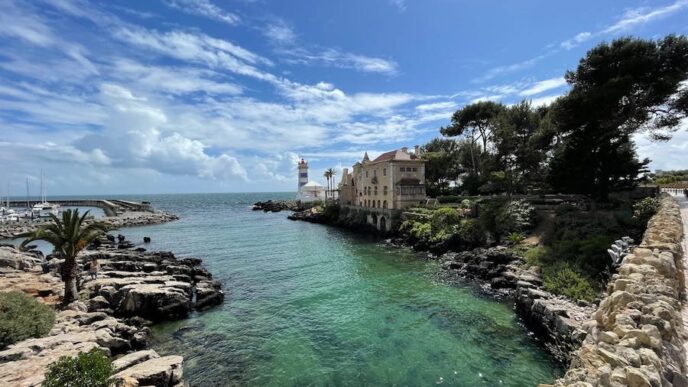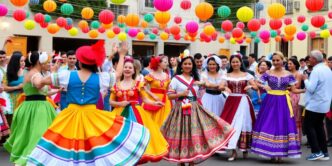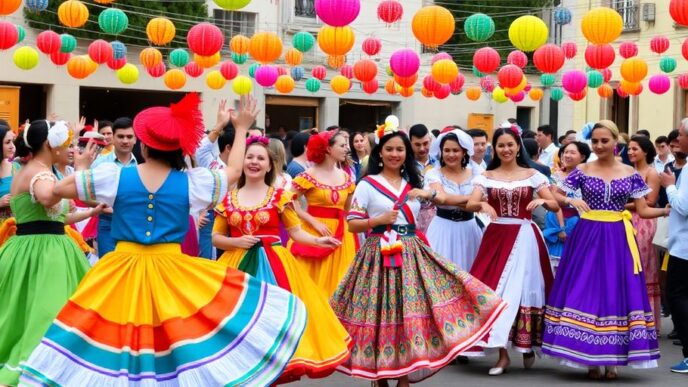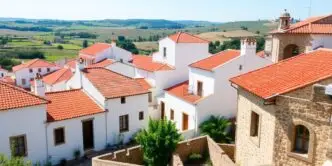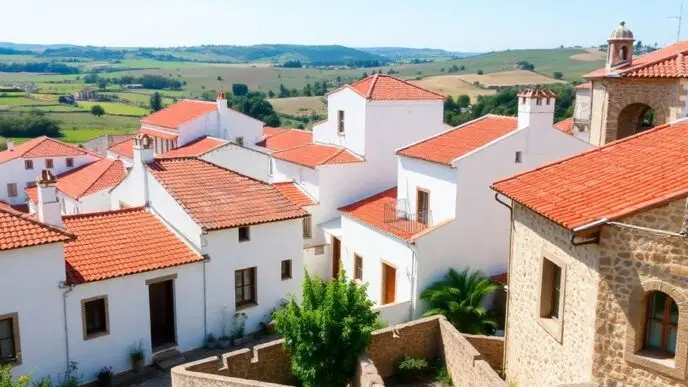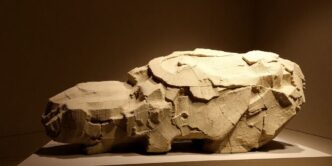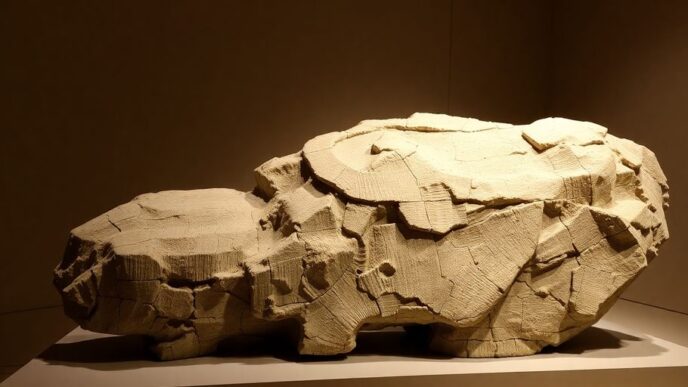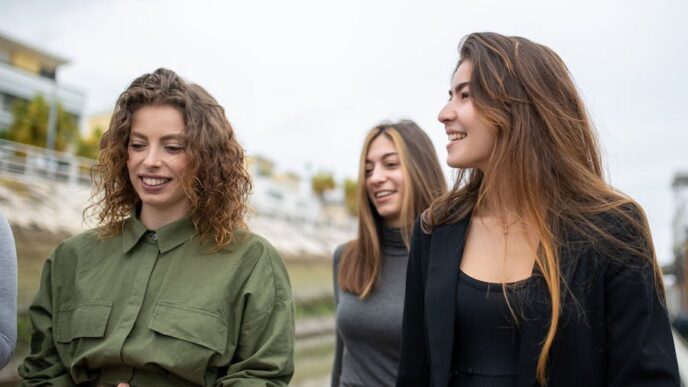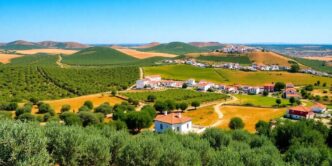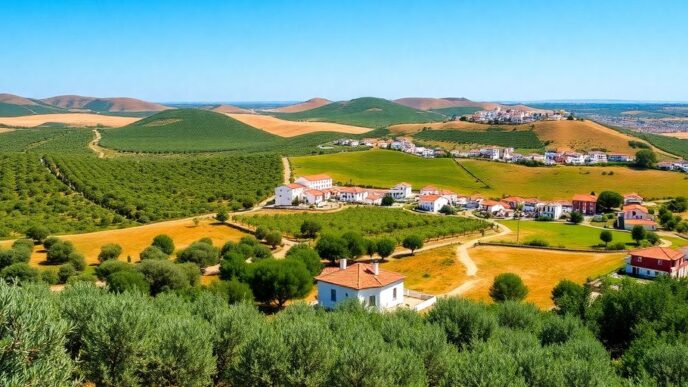The Significance of Christmas Traditions in Portugal
Christmas in Portugal is a time of great joy and celebration, deeply rooted in both cultural and religious significance. Here are some key points that highlight the importance of these traditions:
Cultural and Religious Importance
- Christmas is primarily celebrated on December 24th, with families gathering for a festive dinner.
- The holiday emphasizes family unity, love, and togetherness, making it a cherished time for many.
- The nativity scene, or Christmas crib, is a common sight in homes and public spaces, symbolizing the birth of Jesus.
Historical Evolution of Traditions
- Many Christmas customs in Portugal have been passed down through generations, evolving over time while still retaining their core values.
- The Consoada dinner, featuring traditional dishes like cod, has been a staple for decades, showcasing the blend of history and culinary heritage.
- The introduction of new elements, such as the Bolo Rei, reflects the adaptability of these traditions to modern times.
Influence of Catholicism

- As a predominantly Catholic country, Christmas in Portugal is heavily influenced by religious beliefs and practices.
- The celebration of the Rooster’s Mass at midnight on Christmas Eve is a significant event, marking the spiritual aspect of the holiday.
- Gift-giving customs, once centered around the Child Jesus, have transformed but still carry a sense of symbolic meaning and joy.
Overall, Christmas traditions in Portugal are a beautiful blend of history, culture, and faith, making the holiday season a truly special time for all.
Traditional Portuguese Christmas Foods
Christmas in Portugal is not just about the celebrations; it’s also a time for delicious food. Here are some traditional dishes that you can find during this festive season:
The Consoada Feast
The main meal on Christmas Eve is called Consoada. It usually features:
- Bacalhau (salted cod) baked with potatoes and vegetables.
- Boiled eggs and cabbage as side dishes.
- In some regions, families might choose turkey or roasted lamb instead.
Bolo Rei: The King Cake
A must-have during Christmas is the Bolo Rei, or King Cake. This round cake is filled with:
- Dried fruits and nuts.
- It has a central hole and is often enjoyed on both Christmas Day and Kings Day (January 6).
- Inside the cake, you might find a hidden figurine and a bean; the person who finds the figurine is the king for the day!
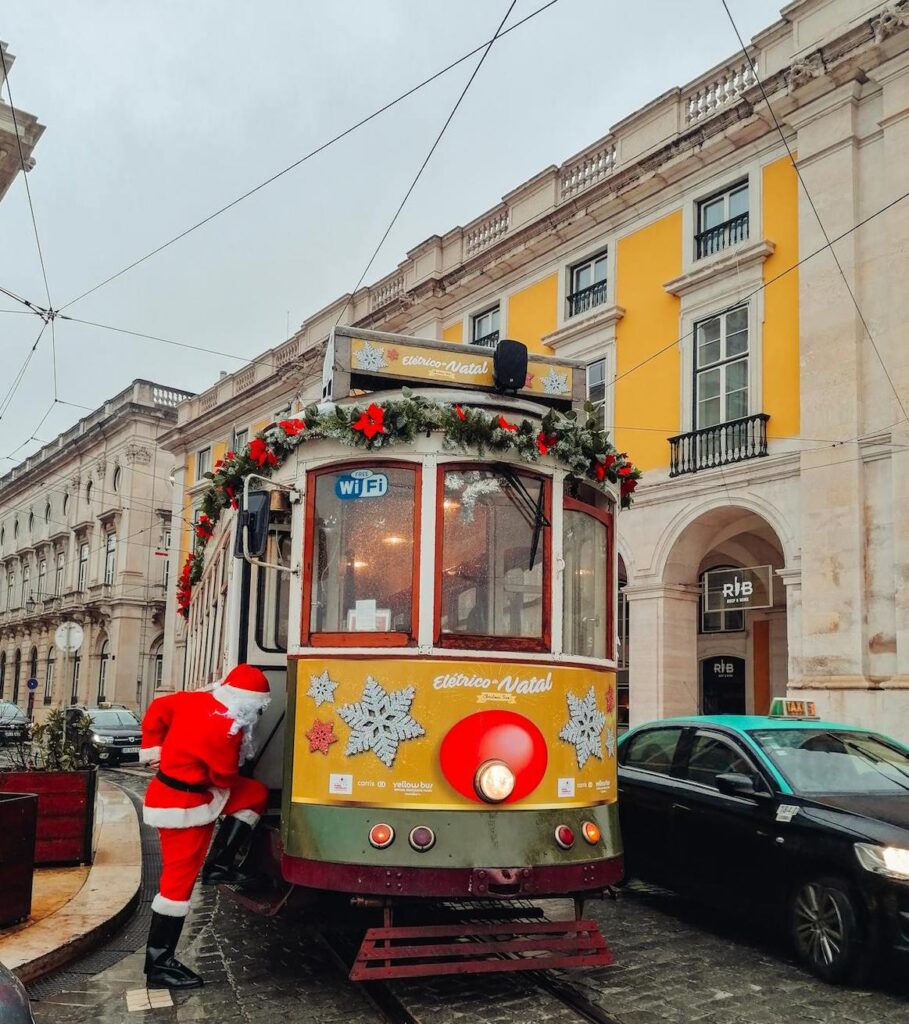
Sweet Treats: Filhós, Sonhos, and Rabanadas
Desserts are a big part of the Christmas feast. Some popular sweets include:
- Sonhos: Fluffy fritters made from pumpkin or carrot, dusted with sugar and cinnamon.
- Rabanadas: Similar to French toast, these are fried bread slices coated in sugar and cinnamon.
- Filhós: Crispy pastries that are deep-fried and sprinkled with sugar.
These dishes not only satisfy the taste buds but also reflect the rich culinary traditions of Portugal, making them must-try Portuguese dishes you can’t miss!
Unique Christmas Celebrations Across Portugal
Christmas in Portugal is celebrated with some truly unique traditions that vary from region to region. Here are a few of the most notable celebrations:
The Mass of the Rooster
- Known as Missa do Galo, this midnight mass is a significant event on Christmas Eve. Families gather to celebrate the birth of Jesus Christ, marking the occasion with prayers and songs.
- After the mass, it is customary to return home and place the baby Jesus in the nativity scene, followed by the exchange of gifts.
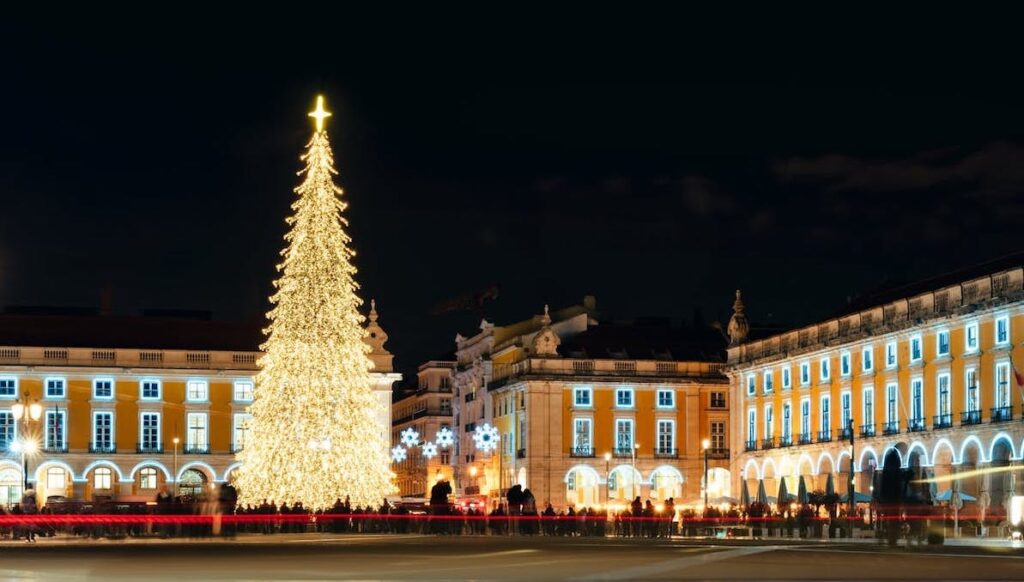
Caretos de Varge Festivities
- In the town of Varge, young men dress up as Caretos, wearing colorful masks and costumes. They run through the streets, creating a lively atmosphere filled with laughter and joy.
- This tradition symbolizes the arrival of winter and is a way to bring the community together through fun and merriment.
Madeiros Bonfires
- In many northern regions, large bonfires called Madeiros are lit on Christmas Eve. These fires are a symbol of warmth and light, representing the triumph of light over darkness.
- People gather around the bonfires to celebrate, share stories, and enjoy each other’s company, creating a sense of community and togetherness during the festive season.
Decorative Traditions and Christmas Lights

The Christmas Cribs
In Portugal, one of the most cherished traditions is the creation of Christmas cribs. These cribs, known as “presépios,” depict the nativity scene and are often elaborately designed. Families take pride in showcasing their cribs, which can include:
- Figures of Mary, Joseph, and Baby Jesus
- Animals like sheep and donkeys
- Local elements such as houses and landscapes
This tradition not only reflects the cultural and religious importance of Christmas but also allows families to express their creativity.
Viana do Castelo’s Christmas Tree
In the city of Viana do Castelo, the Christmas tree is a sight to behold. It is claimed to be the tallest in Europe, standing proudly in the town square. Each year, this tree is adorned with:
- Thousands of colorful lights
- Unique ornaments that reflect local culture
- A star on top symbolizing hope
The tree serves as a gathering point for locals and tourists alike, creating a festive atmosphere that brings the community together.
Lisbon’s Illuminated Streets
Lisbon transforms into a magical wonderland during the Christmas season. The streets are decorated with:
- Over 2 million light bulbs illuminating the main avenues
- Festive displays in squares and parks
- Special light shows that attract visitors
Walking through the illuminated streets of Lisbon is an experience that captures the essence of the holiday spirit, making it a must-see for anyone visiting during this time.
These decorative traditions not only enhance the beauty of the season but also provide an insight into the rich culture of Portugal. They bring families and communities together, celebrating the joy and warmth of Christmas.
Gift-Giving Customs in Portugal

The Tradition of Secret Santa
In Portugal, the tradition of Secret Santa is gaining popularity, especially during tough economic times. This custom allows friends and family to exchange gifts without the pressure of buying for everyone. It’s a fun way to keep the spirit of giving alive while being mindful of budgets.
Children’s Gifts and Family Exchange
Gift-giving is especially important for children in Portuguese families. Kids often receive gifts from:
- Parents
- Grandparents
- Aunts and uncles
This can lead to a delightful pile of presents, making Christmas morning a magical experience for the little ones.
Symbolic Meaning of Gift-Giving
Gift-giving in Portugal is not just about the items exchanged; it carries a deeper meaning. It symbolizes:
- Love and appreciation
- Strengthening family bonds
- Sharing joy with friends
When visiting someone’s home during the holidays, it’s customary to bring a small gift for the hosts, such as wine or a traditional cake like Bolo Rei. This gesture shows respect and gratitude for their hospitality.
Regional Variations in Christmas Celebrations

Christmas in Portugal is celebrated in many unique ways across different regions. Here are some of the most interesting traditions:
The Bananeiro de Braga
- In Braga, the Bananeiro is a special tree that symbolizes the holiday spirit. It is decorated with bananas and other fruits, making it a colorful sight.
- This tradition is a fun way to bring joy and laughter to the community during the festive season.
- People gather around the tree to celebrate and enjoy local treats.
Magusto da Velha and Chestnuts
- On December 26th, the Magusto da Velha takes place, honoring a generous old woman who shared chestnuts and wine with the townsfolk.
- In Aldeia Viçosa, people climb the church tower to throw chestnuts into the bonfire, creating a lively atmosphere.
- This event is filled with storytelling and laughter, as everyone remembers past Christmases together.
The Pinheiro de Guimarães Ritual
- In Guimarães, a unique ritual occurs on November 29th, where a large Christmas tree is brought into the town.
- The tree is carried on a bull cart, and the community gathers to celebrate its arrival.
- This event marks the beginning of the Christmas festivities in the region, bringing everyone together in joy.
These regional variations showcase the rich tapestry of Portuguese Christmas traditions, each adding its own flavor to the holiday season.
Frequently Asked Questions
What are some popular Christmas traditions in Portugal?
In Portugal, families celebrate Christmas with traditions like the Consoada feast, where they enjoy cod and turkey, and the Bolo Rei cake, which is a symbol of the holiday. They also attend the Midnight Mass, known as Missa do Galo.
What is the significance of the Christmas crib in Portugal?
The Christmas crib, or nativity scene, is very important in Portuguese culture. It represents the birth of Jesus and is displayed in homes and churches as a way to celebrate the holiday.
How do Portuguese families celebrate Christmas Eve?
On Christmas Eve, families gather for a special dinner that usually includes cod and other traditional dishes. They celebrate late into the night and often exchange gifts after attending the Midnight Mass.
What is Bolo Rei and why is it special?
Bolo Rei, or King Cake, is a traditional cake eaten during Christmas in Portugal. It symbolizes the gifts given to Jesus by the Wise Men and contains a hidden fava bean. The person who finds it must buy the cake the next year.
Are there any unique regional Christmas celebrations in Portugal?
Yes, different regions in Portugal have their own unique Christmas celebrations. For example, the Bananeiro de Braga features a banana tree, and the Magusto da Velha involves sharing chestnuts and wine in memory of a generous old woman.
What role does gift-giving play in Portuguese Christmas traditions?
Gift-giving is an important part of Christmas in Portugal, especially for children who receive gifts from family and friends. Many families also participate in Secret Santa exchanges.

